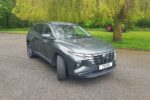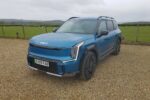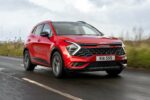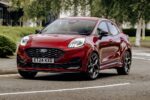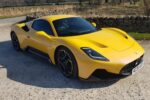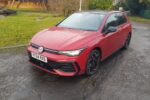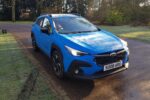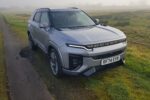Featured · Kia · Reviews · Road Tests
California Dreamin’ Pt 3: Morro Bay to San Francisco
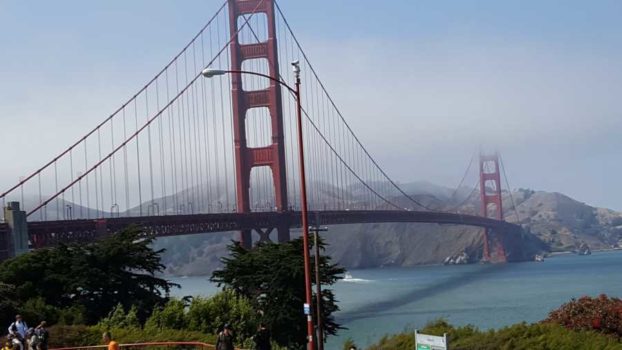
NEVER in recent memory has California been so devastated by forest fires and landslides.
But there were problems even before the tragic events of the last few months.
Last May, a near-vertical slab of mountain collapsed at a place called Mud Creek, cutting off what many believe to be the most spectacular coastline in the US – the stretch known as Big Sur.
For us it meant those gorgeous views along the cliffs were replaced by the sight of lorries on Highway 101, at least until we arrived at Monterey – made famous by the legendary pop festival of 1967.
Another 28 dollars of unleaded gas in the tank of the Kia Soul Turbo and we were ready for a nearby scenic treat on a par with Big Sur, the golfers’ paradise called 17-Mile Drive.
Costing non-residents $10.25 per vehicle, this twisting road wends its way through Del Monte Forest, past the Poppy Hills golf course – a classy drop-in for a decent value and quiet lunch – before dropping down to the craggy coast at Point Joe where early mariners often crashed into rocks believing it was the entrance to Monterey Bay.
Of the 21 points of interest, Bird Rock towards the western end of the tour is the last must-see spot with its pelicans, shearwaters and seals before you reach the spectacular Cypress Point, for 100 years a favourite view of the dramatic Pacific coast.
Nearby is one of California’s most abiding landmarks The Lone Cypress, perched high above the ocean for more than 250 years.
And before leaving the Drive there has to be time for a stop at the Pebble Beach links, probably the next most famous golf venue in the USA after Augusta.
You can visit the clubhouse, its high end clothes and equipment shops, the putting green, sip a coffee on the balcony or and even wander down to the 18th green.
The route’s exit gate is just yards from the quaint village of Carmel by the Sea, where Clint Eastwood was once mayor.
But the livelier Monterey beckons, so it’s back aboard the Soul-train for the 10-minute hop to one of California’s most iconic destinations, scattered with restaurants, bars, a relaxed vibe and the famous Ghirardelli Ice Cream and Chocolate Shop.
You won’t have seen anything like Ghirardelli’s. It’s not cheap, but then when delights like a Strike It Rich Butterscotch Hot Fudge Sundae ($11.95) consisting of butter pecan and vanilla ice cream, butterscotch sauce, diced almonds, handmade hot fudge, whipped cream and cherry, or a $39 Earthquake Family Favourite – eight scoops of ice cream with whoppings of toppings – are on offer it’s hard to resist.
It’s also a chocaholic’s paradise so we indulge, then walk off the calories along Cannery Row, the tourist Mecca made famous by the John Steinbeck novel of the same name.
These days there’s nothing left of the old fish canning operations, now replaced by boutiques, art galleries, jewellery stores and gift shops.
No visit would be complete without a stroll along Fishermen’s Wharf, where the whale-watching companies vie for custom from tourists keen for an afternoon out in Monterey Bay.
Chris’ Whale Watching does discounts and group rates for its three-hour narrated cruises from which, depending on the time of year you can expect to see Killer Whales, Grey Whales or even that giant of the ocean the Blue Whale.
The smaller the boat the nearer you’re likely to get to the sealife and after spotting plenty of dolphins and a few sea otters we got close up and personal with a school of Humpbacks frolicking close to the deep water canyons.
You could spend days exploring the delights of Monterey but time is pressing and the lure of San Francisco becomes irresistible.
There’s still the best part of another 120 miles to cover along Highway 1 and following a brief stop at the historic resort of Capitola – and a bite to eat on its spider-legged pier – we press on towards university centre Santa Cruz and take in some fresh air on the West Cliff Walk just three miles north of the city.
Spending a few hours pottering the Ano Nuevo State Park, famous for its rosemary fields, and spotting the Elephant Seals – up to 10,000 return to the beaches every year – is a certainly worth the effort.
The area has a distinctive charm with its coastal terrace prairie, wetland marshes and dune fields, where endangered species like the California Red-Legged Frog and San Francisco Garter Snake live.
Then it’s on to SF via the delights of Pigeon Point, Pescadero with its Wild West vibe, Half Moon Bay and Pacifica.
Driving in San Francisco, especially midweek, may be stressful but not half as much as the cost of parking, which can hit you for $50 in a hotel car park – even if you’re staying there.
It makes more sense to us a hop on and off city tour on one of the many open-top buses, with a bird’s eye view of the sights from Pacific Heights and Chinatown to Mel’s Drive-in from the movie American Graffiti and Lombard Street where Steve McQueen in his Ford Mustang chased mob hitmen in a Dodge Charger.
Nearby Nob Hill, highpoint of the city centre, offers views of Alcatraz and most of the buses cross the Golden Gate Bridge then stop at a terminus at Sausalito, in Marin County.
It was here at Waldo Point in 1967 that Otis Redding wrote the lyrics for Dock Of The Bay, still one of the most frequently played songs on radio, while relaxing on a rented houseboat.
That same year was also a landmark one for San Francisco, home to the Summer of Love and where the Haight-Ashbury district became birthplace of the late ‘60s counterculture movement.
For anyone with a love of rock music, this is the must-see – and must photograph – part of SF.
Pose in front of the giant mural of Jerry Garcia on the corner of Cole and Haight, linger in the vast Amoeba Records store, spot the Jefferson Airplane mansion at 2400 Fulton Street, gawp at Jimi Hendrix’s Red House on the main Haight Street itself or spot the original ‘groovy refuge’ the Free Health Clinic.
You may even spot a few hippie hangovers with tie-dye T shirts – and dyed grey roots!









